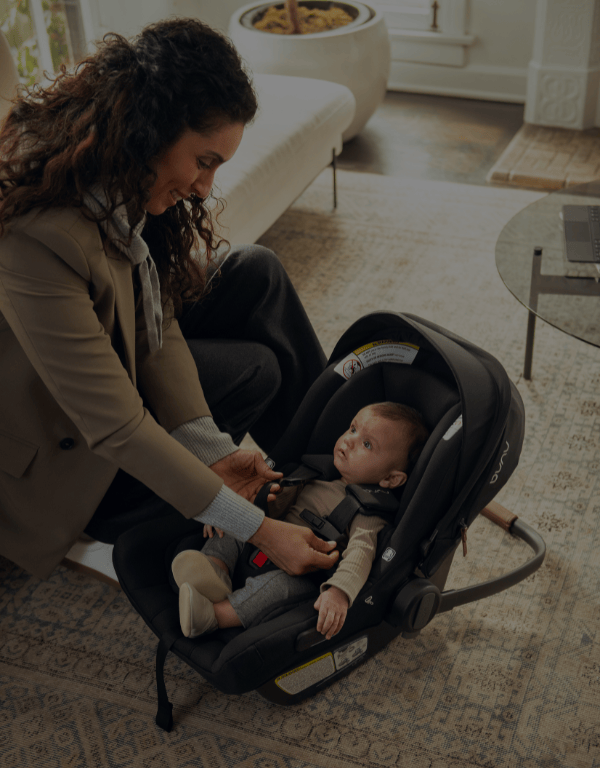
So, you’ve got a little one who’s suddenly decided that bath time is off-limits? You’re not alone. Many parents have been there, and while frustrating, it’s completely normal. One day your toddler is splashing happily, and the next, they’re wailing at the sight of the tub. It can be stressful and confusing, but take a deep breath—we’re here to help.
In this guide, we’ll explore why your toddler might hate baths and, more importantly, how you can turn things around. With a few simple strategies and a lot of patience, bathtime can become a fun part of your daily routine again. We’ll cover practical tips for making the bath more appealing, address specific fears your child might have, and provide guidance on when it might be time to seek a little extra help.
Reasons Why Your Toddler May Suddenly Hate Baths
If your toddler suddenly decides that bath time is the worst time, welcome to the club! Here are some common reasons toddlers might resist baths and how you can help them feel more comfortable.
- They’re flexing their independence. Your toddler is growing up and might want to assert their “big kid” independence. Bath time can feel like one more thing they don’t have control over. Offer your kiddo choices to help them feel more in charge (bubbles or no bubbles, which toys, etc.). Giving them some control can reduce power struggles and (hopefully) tantrums.
- They had a bathtime blunder. Maybe your toddler slipped in the tub and got a boo-boo. Or got some shampoo in their eyes. Or were frightened by a big wave at the beach. Bathtime without tears may take some hand-holding and gentle reassurance after a less-than-great experience.
- They’ve had a major change in routine or schedule. Toddlers thrive on routine, and any disruption can throw them off balance. If your kiddo is adjusting to a new sibling, home, or daycare, they feel unsettled. Try to keep their other routines as consistent as possible.
- They’re scared. Fears and phobias are a developmentally “normal” part of childhood. It may simply be that the tub has become a new scary thing. (The idea of going down the drain is chilling.)
When Do Toddlers Outgrow Hating the Bath?
Most toddlers go through phases of bathtime resistance, and the good news is that it usually doesn’t last forever. Typically, toddlers may start resisting baths between 1 and 2. This temporary phase can last a few months but often improves by the time they reach their 3rd or 4th birthday. Usually patience and consistent reassurance can turn the bathtime blues around.
Tips for Better Bathtime Vibes
If nightly bathtime battles are wearing you out, there is a silver lining: You don’t actually need to bathe your toddler every day. As long as they aren’t visibly dirty or sticky, and haven’t had an obscenely huge diaper blowout, you can get away with bathing your kiddo 2 or 3 times a week. In the meantime, reset better bathtime vibes by:
Cranking Up the Fun
Now’s the time to break out the whole enchilada. Bubbles! Bath crayons! Water guns! Fishing nets! Pouring cups! Turn your tub into a playground. Sing your toddler’s favorite songs, or play hide-and-seek with rubber duckies. Engaging their imagination can make the bath feel more like playtime and less like a chore. Pro tip: Rotate your toy assortment to curb your kiddo’s boredom.
Adjusting Your Routine
Making minor tweaks to your typical bathtime routine can make a world of difference. Sometimes, a simple change in the timing of the bath can help. If your toddler is usually too tired or too energetic at their regular bath time, try shifting it to a different time of day when they might be more cooperative. Does your toddler have a sibling? Bathing with a brother or sister can turn bathtime into a fun, shared activity rather than a solo (aggravating) event. And if one caregiver is usually responsible for bathtime, try tapping in your coparent instead.
Involving Your Toddler
Encourage your toddler to “direct” bathtime. Let them help fill the tub with water or choose which toys they want to bring in. You can even let them add the bubbles—get crazy! This sense of inclusion can make them feel more empowered and less resistant. Allowing them to “wash” their toys or even themselves (with your help) can make them feel like masters of their domain.
Keeping It Short
Your toddler can skip a bath for a day or two without any issues, so don’t stress too much about missing a bath here and there. But if their refusal to bathe isn’t improving, you’ll eventually need to get them clean. Make bathtime short and sweet, then immediately redirect them to another activity to divert their attention. And remember, even though it can be challenging, try to stay calm and composed. Getting frustrated or upset will only make the situation more difficult for both of you.
Trying a Shower
Sometimes, a shower feels less intimidating than a bath for your little one. The novelty of a shower can pique their curiosity and make them more willing to scrub-a-dub. You can either join them or perch on the floor next to the door to supervise. If your toddler is resistant to the bath, switching things up with a shower might just be the trick you need.
What to Do When Your Toddler Is Suddenly Fearful of the Bath
It can be surprising and a little disheartening when your toddler, who used to love splashing around in the tub, suddenly becomes fearful of bath time. And while it may feel irrational to you, it feels very real to them. Here’s how to navigate this phase and help manage your kiddo’s anxiety.
- Understand their fear. If a specific incident started your kiddo’s bathtime blues, try to acknowledge it and empathize with them. Did they slip and fall? Tell them, “Slipping in the tub is scary, so this time we’ll be extra careful when we stand up.”
- Take it slow. Try resetting bathtime with “exposure” therapy. Start slow by simply spending a few moments in the bathroom that are silly and not bath related. Graduate to sitting in the tub with their clothes on. If that goes well, attempt a very quick bath in super shallow water. Once they’re tolerating bird baths, start gradually increasing the water and time spent in the tub.
- Acknowledge progress. Acknowledging progress can be incredibly encouraging for toddlers who are afraid of the bath. Celebrate even the smallest victories, like stepping into the tub without crying or playing with a bath toy. Praise their bravery and let them know how proud you are. Parental affirmation boosts their confidence and but creates positive associations with bathtime, making each subsequent bath a little easier.
- Stay calm. Your reaction can greatly influence your toddler’s feelings about bathtime. Stay calm and avoid forcing them into the bath—you could exacerbate the issue and create even more fear and anxiety.
When to Seek Help
If your toddler’s aversion to baths persists beyond the typical age range or seems particularly intense, it might be worth discussing with your pediatrician. Sometimes, underlying issues like sensory processing disorders or skin sensitivities can contribute to bathtime fears, and a professional can offer tailored advice and solutions.
Handling Fear of Water or Splashing
Fear of water or splashing can turn bath time into a struggle. If your little one is scared of water, introduce them to it gradually. You might begin with shallow water, just enough to cover their legs. You can also try using a washcloth to gently wet their arms and legs before moving to a full bath.
Playing with water outside the tub can also help. Fill a small basin with water and let them splash around with their hands or play with water-safe toys. Low pressure water play can help them get used to the sensation of water in a non-threatening way.
To make them feel safer, be sure to reassure them constantly. Hold their hand, talk to them gently, and show them that there’s nothing to fear. You might also want to bathe with them or have an older sibling demonstrate how fun and safe bath time can be. Sometimes, seeing someone else enjoy the bath can help ease their fears.
Dealing with Aversion to Hair Washing
Hair washing can be a significant source of anxiety (and sensory overload!) for many toddlers. Water trickling down their face and into their eyes can be uncomfortable and scary. To help with this, you can use a washcloth to wet their hair gently rather than pouring water over their head. Using a handheld showerhead or a plastic cup with a spout can give you more control over the water flow.
Using tear-free shampoos can also calm the hair washing scaries. These products are formulated to be gentle on the eyes, reducing the sting if some shampoo does make its way down their face.
Turning hair washing into a fun activity can help, too. Sing a silly song or make up a story about washing away the “dirt monsters” from their hair. The more you can make it a game, the less protest you’ll encounter.
Finding What’s Right for You
Albee Baby is the oldest family-owned specialty baby shop in the US. We pride ourselves on providing our customers with the best assortment of baby products anywhere, at fair prices, always. We’re committed to being an inclusive resource for parents and hope you feel empowered to find the right baby gear for your family. Still have questions? Feel free to contact our baby gear experts at 877.692.5233 or info@albeebaby.com.
 Car Seats
Car Seats
 Strollers
Strollers
 Travel Cribs & Playards
Travel Cribs & Playards
 High Chairs
High Chairs
 Cribs & Nursery
Cribs & Nursery
 Health & Safety
Health & Safety
 Gift Shop
Gift Shop





























































